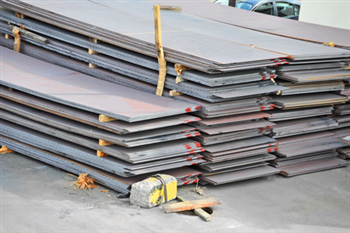Quality Considerations for Sheet Metal Cutting
February 11, 2015
Hydraulic machinery is used in a wide range of industries. One of the most important jobs it does is cutting sheet metal, a process that is essential for everything from airplane wings to building roofs, medical tables to transformers.
Metal work has been done for centuries. Knights of the Round Table used plate armor, which required the cutting of sheets of metal. Today the field employs over 100,000 sheet metal workers. The industry is valued at over $20 billion.
Cutting means separating a section of metal from a sheet according to precise, pre-determined plans. The work is done by shearing body, like that found on a hydraulic guillotine shearing machine, which moves the sheet of metal through two dies.
By definition, sheet metal less than one quarter of an inch thick. A modern day hydraulic cutter is a complex piece of machinery that allows the products made to extremely fine tolerances. In order to handle these tolerances, the clearance must be handled expertly.
Maintaining the quality control of the cutting process and the final sheet metal that is produced requires careful oversight of clearance tolerances and care with design considerations.
Clearance Quality
Cutting clearance is the lateral distance between the edge of the punch and the edge of die hole. Quality sheet metal cutting is dependent on how well the clearance is maintained. The cleaner the metal separates from the sheet, the higher quality the cut is.
Problems occur if there is too little clearance or too much. In both cases, the results are fracture lines that don’t measure up precisely and edges that don't have the proper geometry, and thus don't meet quality standards.
The amount of clearance needed depends on the thickness of the sheet metal. The specific amount is expressed as a percentage of the sheet metal’s thickness, and can range from 1% to 30%. As a rule, it runs between 3% to 8%.
Each type of metal has different optimum clearances. For example, brass works best at 6% but hard steel needs 7.5% and aluminum alloy is around 4%.
According to hydraulic shearing machine manufacturers like Preci-Shear, lubrication is a key component of maintaining a right clearance, necessary to keep the machinery in good working order.
Design Quality
The work done before the metal actually hits the press is an essential factor in the overall quality of the end product. Proper design takes into consideration how the sheet of metal is best utilized. Using standard size sheets saves money because it avoids the need for custom work like extra slitting or special mill preparation.
When a designer takes the time to consult with the metal worker beforehand, he can avoid excess expense and reduce the amount of waste per sheet. For example, dimensions of flanges might be modified so that the overall part layout is smaller than a standard sheet.
The designer needs to take into consideration the grain direction and the limitations of a material. If not done prior to the work, the end product might be defective. He also needs to worry about process characteristics like burrs, twist and hold down marks. These should be factored into the design so that the end product meets the standards required.

